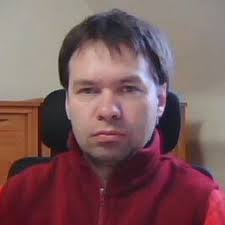
Project ID:
6000000009
Accepted:
Typ:
Layout:
Question:
Přiřaďte každému tělesu vzorec, kterým lze vypočítat jeho objem.
Tex:
% http://math4u.vsb.cz/ticket/32562
\definecolor{Maroon}{rgb}{0.76, 0.13, 0.28}
\usetikzlibrary{arrows,calc}
\makeatletter%
% \pgfkeys{
% /tkzcone/.cd,
% }
\define@cmdkey[TKZ]{ell}{color}{}
\define@cmdkey[TKZ]{ell}{shift}{}
\presetkeys[TKZ]{ell}{color = {},shift = 0}{}
% (#2,#3) coordonnĂŠe du centre (#4,#5) Ra et Rb
\newcommand*{\ellipseThreeD}[1][]{\tkz@ellipseThreeD[#1]}%
\def\tkz@ellipseThreeD[#1](#2,#3)(#4,#5){%
\setkeys[TKZ]{ell}{#1}%
\draw[yshift=\cmdTKZ@ell@shift cm,dashed] (#4,0) arc(0:180:#4 and #5);
\draw[yshift=\cmdTKZ@ell@shift cm ] (-#4,0) arc(180:360:#4 and #5);
\path[fill=\cmdTKZ@ell@color,opacity=0.5,shade](#2 cm,#3 cm) ellipse (#4 and #5);
}
\newcommand*{\sellipseThreeD}[1][]{\tkz@sellipseThreeD[#1]}%
\def\tkz@sellipseThreeD[#1](#2,#3)(#4,#5){%
\setkeys[TKZ]{ell}{#1}%
\draw[yshift=\cmdTKZ@ell@shift cm,dashed] (#4,0) arc(0:180:#4 and #5);
\draw[yshift=\cmdTKZ@ell@shift cm ] (-#4,0) arc(180:360:#4 and #5);
}
\def\tkzCone{\pgfutil@ifnextchar[{\tkz@cone}{\tkz@cone[]}}
\def\tkz@cone[#1]#2#3#4{%
% #1 styles
% #2 rayon R
% #3 coeff d'aplatissement k
% #4 Hauteur du cĂ´ne H
% \pgfkeys{%
% /tkzcone/.cd
% }%
% \pgfqkeys{/tkzcone}{#1}%
\pgfmathsetmacro{\bb}{#2*#3}
\pgfmathsetmacro{\yy}{\bb*\bb/#4}
\pgfmathsetmacro{\xx}{#2*sqrt((1-\yy)/#4)}
\fill[color=Maroon!10] (0,#4)--(-\xx,\yy) arc(180:360:\xx cm and .5 cm);
\ellipseThreeD[color=Maroon!30](0,0)(\xx cm,.5 cm)
\draw (0,#4)--(\xx,\yy);
\draw (0,#4)--(-\xx,\yy);
\draw[dashed] (0,0) -- node[right] {$5$} (0,#4);
\draw[dashed] (0,0) -- node[below] {$3$} (1.75cm,0);
}%
\def\tkzCylinder{\pgfutil@ifnextchar[{\tkz@cylinder}{\tkz@cylinder[]}}
\def\tkz@cylinder[#1]#2#3#4{%
\pgfmathsetmacro{\bb}{#2*#3}
\pgfmathsetmacro{\yy}{\bb*\bb/#4}
\pgfmathsetmacro{\xx}{#2*sqrt((1-\yy)/#4)}
\fill[color=Maroon!10] (-\xx cm,0)--(-\xx cm,#4 cm)
arc(180:360:\xx cm and .5 cm)--(\xx cm,0)
arc(360:180:\xx cm and .5 cm);
\ellipseThreeD[color=Maroon!30](0,0)(\xx cm,.5 cm)
\begin{scope}[yshift=#4 cm]
\draw[fill=\cmdTKZ@ell@color,opacity=0.5,shade](0,0) ellipse (\xx cm and .5 cm) ;
\end{scope}
\draw (\xx cm,0)--(\xx cm,#4 cm);
\draw (-\xx cm,0)--(-\xx cm,#4 cm);
\draw (-1pt,-1pt)--(1pt,1pt);
\draw (1pt,-1pt)--(-1pt,1pt);
\begin{scope}[yshift=5cm]
\draw (-1pt,-1pt)--(1pt,1pt);
\draw (1pt,-1pt)--(-1pt,1pt);
\draw[dashed] (0,0)--node[below]{$5$}(1.8 cm,0);
\end{scope}
\draw (2cm,2.5cm) node[right] {$7$};
}%
\def\tkzTruncatedCone{\pgfutil@ifnextchar[{\tkz@TruncatedCone}{\tkz@TruncatedCone[]}}
\def\tkz@TruncatedCone[#1]#2#3#4{%
\pgfmathsetmacro{\bb}{#2*#3}
\pgfmathsetmacro{\yy}{\bb*\bb/#4}
\pgfmathsetmacro{\xx}{#2*sqrt((1-\yy)/#4)}
\fill[color=Maroon!10] (-\xx cm,0)--(-0.5*\xx cm,#4 cm)
arc(180:360:0.5*\xx cm and .25 cm)--(\xx cm,0) arc(360:180:\xx cm and .5 cm);
\ellipseThreeD[color=Maroon!30](0,0)(\xx cm,.5 cm)
\begin{scope}[yshift=#4 cm]
\draw[fill=\cmdTKZ@ell@color,opacity=0.5,shade](0,0) ellipse (0.5*\xx cm and .25 cm);
\end{scope}
\draw (\xx cm,0)--(0.5*\xx cm,#4 cm);
\draw (-\xx cm,0)--(-0.5*\xx cm,#4 cm);
\draw[dashed] (0,0) -- node[right] {$5$} (0,#4);
\draw[dashed] (0,0) -- node[below] {$3$} (2.2cm,0);
\draw[dashed] (0,#4) -- node[above] {$1$} (1cm,#4);
}%
\def\tkzSphere{\pgfutil@ifnextchar[{\tkz@Sphere}{\tkz@Sphere[]}}
\def\tkz@Sphere[#1]#2#3#4{%
\pgfmathsetmacro{\bb}{#2*#3}
\pgfmathsetmacro{\yy}{\bb*\bb/#4}
\pgfmathsetmacro{\xx}{#2*sqrt((1-\yy)/#4)}
\filldraw[ball color=Maroon!10] (0,0) circle[radius=\xx];
\sellipseThreeD(0,0)(\xx cm,.65 cm)
\begin{scope}[rotate=-90]
%\sellipseThreeD(0,0)(\xx cm,.25 cm)
\draw[dashed] (0,0)-- node[below]{$2$} (0,\xx cm);
\draw (-1pt,-1pt)--(1pt,1pt);
\draw (1pt,-1pt)--(-1pt,1pt);
\end{scope}
}%
\newcommand{\parapp}[3]{%
\fill[Maroon!10,opacity=.5] (0,0,0)-- (#1,0,0) -- (#1,#3,0) -- (0,#3,0) --cycle;
\fill[Maroon!10,opacity=.5] (0,0,#2)-- (#1,0,#2) -- (#1,#3,#2) -- (0,#3,#2) --cycle;
\fill[Maroon!10,opacity=.5] (0,#3,0)-- (0,#3,#2) -- (#1,#3,#2) -- (#1,#3,0)--cycle;
\fill[Maroon!10,opacity=.5] (0,0,0)-- (0,0,#2) -- (#1,0,#2) -- (#1,0,0)--cycle;
\draw[] (0,0,#2) -- (#1,0,#2) -- (#1,#3,#2) --(0,#3,#2) --(0,0,#2)
(#1,0,#2) -- (#1,0,0) -- (#1,#3,0) --(0,#3,0) -- (0,#3,#2)
(#1,#3,#2) -- (#1,#3,0);
\draw[dashed] (0,0,0) -- (0,0,#2) (0,0,0)-- (#1,0,0) (0,0,0)-- (0,#3,0);
}
\otazka{ \begin{tikzpicture}[scale=0.6] \tkzCylinder{4}{0}{5}\end{tikzpicture}}{$\pi\int_2^9 25\,\mathrm{d}x$}
\otazka{ \begin{tikzpicture}[scale=0.6] \tkzCone{4}{0}{5}\end{tikzpicture}}{$\pi\int_0^5 \frac{9}{25}x^2\,\mathrm{d}x$}
\otazka{ \begin{tikzpicture}[scale=0.6] \tkzTruncatedCone{5}{0}{5}\end{tikzpicture}}{$\pi\int_0^5 \left( \frac 25 x+1\right)^2\,\mathrm{d}x$}
\otazka{ \begin{tikzpicture}[scale=0.6] \tkzSphere{4}{0}{4}\end{tikzpicture}}{$\pi\int_0^4 [4-(x-2)^2]\,\mathrm{d}x$}
\fake{$\pi\int_2^9 5\,\mathrm{d}x$}
\fake{$\pi\int_0^5 \frac 35 x^2\,\mathrm{d}x$}
\NastavOT{4}
